#wild perennial lupine
Text

Ohio Spring Wildflower Field Guide
#dodecatheon meadia#lupinus perennis#Primula meadia#sooting-star#eastern shooting star#wild lupine#wild perennial lupine#sundial lupine#blue lupine#indian beet#old maid's bonnets#flower#flowers#spring flowers#spring#floral#wildflowers#wild flowers#ohio#ohio wild flowers#botany#april#may
1 note
·
View note
Text
A major goal for the growing season is to catch my Wild Lupine (Lupinus perennis) seed pods BEFORE they burst so that I can give native botanicals to everybody that I have ever met who gardens. We tried to do this last year but it was the first time that the lupine had bloomed and those seedpods go a lot faster than expected.
2 notes
·
View notes
Text

Beautiful droplets. I really don't want to weed out these Lupins from the Neo Garden but I'm gonna have to eventually bite the bullet and do it;
if I ever want native Lupin (Lupinus perennis) in these gardens I'll have to not have garden lupines (Lupinus polyphyllus) to avoid interbreeding since they breed a little too zealously. It's part of why pureblood native Lupins are so hard to find even in the wild anymore.
Till I can remedy that in my gardenscapes I'll enjoy the beauty of these lads a little longer.
#my plants#my gardens#my post#lupine#lupin#Lupinus polyphyllus#Lupinus#plantlbr#gardeners of tumblr#gardeners on tumblr#leaves#foliage#water droplet
11 notes
·
View notes
Text
Red dead gang + flowers, part two :)
Javier Escuella - Calochortus venustus; Red mariposa lily, a native to the deserts of southern California, it’s a stunning yet diminutive lily that blooms with the spring rains. Its striking petal markings and sharp sepals give it a unique flair that makes this little flower an absolute show stopper.
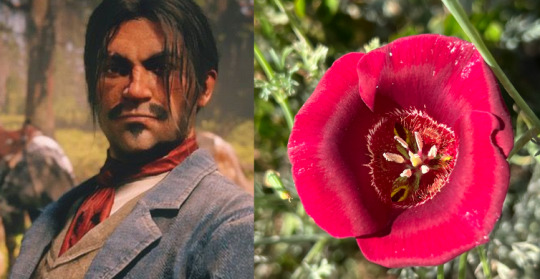
Sadie Adler - Lupinus arboreus; Yellow lupine, a coastal dwelling perennial shrub, its bright yellow stalks can be seen from February to July along the Pacific coast. This flower is typically symbolic of voraciousness, resilience, and recovery from trauma.
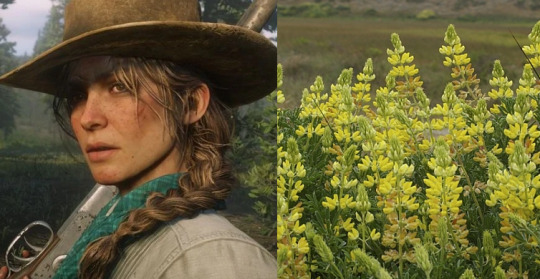
Micah Bell - Aconitum columbianum; Monkshood, an annual herb that grows in mountainous regions of the western US. One of the most toxic plants in north America, monkshood was used by settlers as poison for rats. It was also given in bouquets as a warning or a threat that symbolized treachery.
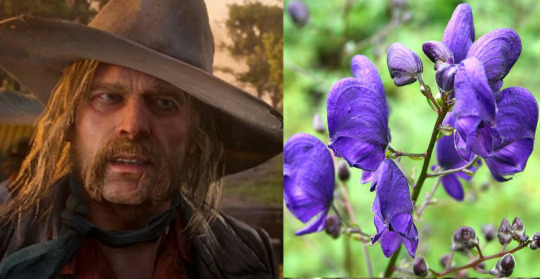
Karen Jones - Hibiscus schizopetalus; Spider hibiscus, a plant native to tropical east Africa, this wild looking flower is cultivated as an ornamental in greenhouses around the world. Its fiery looking petals and dangling pistil give this flower an intense look unique to this species.
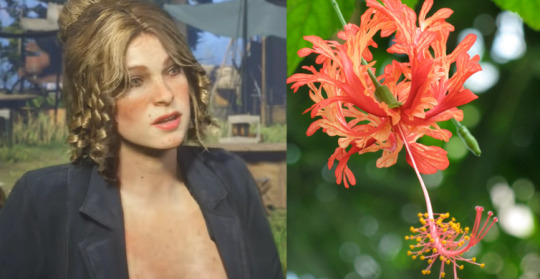
Kieran Duffy - Aesculus hippocastanum; Horse chestnut, a southern european native closely related to the American chestnut, this tree is a favorite of bonsai artists and ornamental tree nurseries. Its flower spikes produce 1-3 large inedible seeds (”horse chestnuts”) every summer and autumn.

Lenny Summers - Gazania linearis; Treasure flower, native to south Africa and naturalized in the US, this showy orange flower in the Aster family is a drought tolerant plant that is widely cultivated for its beautiful color and ease of hybridization. Given as a gift, it symbolizes riches and and good luck. (I am ignoring the fact that Lenny attains neither of these)

Simon Pearson - Salvia leucophylla; Purple sage, another Pacific coast native with aromatic leaves and light purple flowers. It spreads readily by rhizome and thrives in harsh seaside conditions, making it an optimal choice for stabilizing cliffsides and windswept inlets. It has allelopathic qualities that inhibit the growth of other competing seedlings as well as the growth of certain bacteria and fungi.
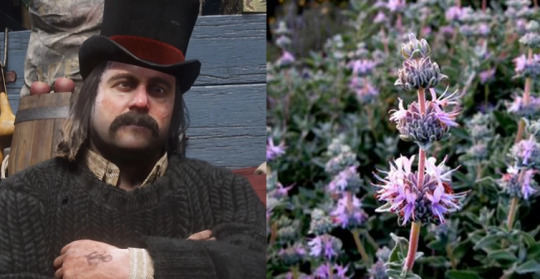
John Marston - Opuntia ficus-indica; Barbary fig, a hybrid species of prickly pear cactus widely cultivated as a food crop in arid countries around the world. It thrives in full sun, deep sandy soil, and hot temperatures. In native habitats, it’s mainly pollinated by moths and hummingbirds to produce a sweet, strawberry/fig tasting fruit that can be cooked, eaten raw, or fermented into alcoholic drinks. One of the quintessential western cacti, I couldn’t resist pairing it with our favorite ol’ cowboy.
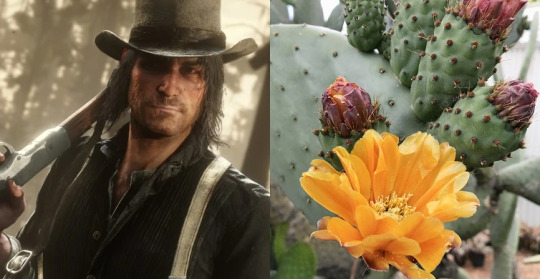
Susan Grimshaw - Silybum marianum; Milk thistle, a prickly plant with a readily adaptive growth habit, this flower is sometimes cultivated for its seeds or made into a tea for treating various ailments. Traditionally, the thistle symbolizes devotion, bravery, strength, and resilience.
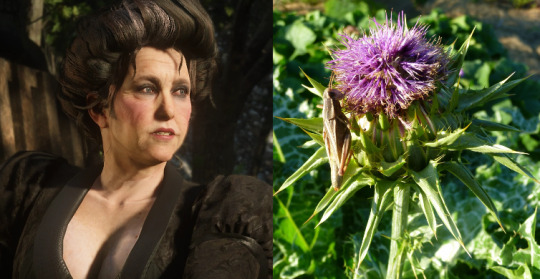
That’s all I got for now :) lemme know if you guys have other flower ideas for these guys, I love mashing my two favorite things together like this!
#i forgot to add bill and strauss dont @ me#rdr2#Red Dead Redemption 2#Javier Escuella#Sadie Adler#Micah Bell#Karen Jones#Kieran Duffy#Lenny Summers#Simon Pearson#John Marston#Susan Grimshaw#you guys have no idea what i had to endure looking thru google images for a decent picture of Karen#Long post#sorry this took so long also. I got distracted by shrek 2 on tv
180 notes
·
View notes
Text
Native Plants I’ve Actually Seen Growing Wild in Southern Ontario
Acer saccharinum (silver maple) --along the sides of highways
Acer saccharum (sugar maple) --GTA ravines
Achillea millefolia (yarrow) --GTA ravines
Allium schoenoprasum (wild chives) --GTA ravines, Ridgetown
Allium tricoccum (ramps) --Niagara region escarpments
Amaranthus retroflexus (redroot amaranth) --fallow areas in the GTA
Ambrosia artemisiifolia (ragweed) --fallow areas in the GTA
Ambrosia trifida (giant ragweed) --parks in the GTA
Amelanchier spp. (saskatoon/serviceberry) --GTA ravines
Arisaema triphyllum (Jack-in-the-pulpit) --GTA ravines
Aronia melanocarpa (black chokeberry) --ravines and parks in the GTA
Asarum canadense (Canada ginger) --GTA ravines
Asclepias syriaca (common milkweed) --fallow areas, ravines, and parks throughout southern Ontario from Windsor to GTA
Asplenium trichomanes (maidenhair spleenwort) --Niagara region escarpments
Betula spp. (birch) --ravines and parks throughout southern Ontario from Windsor to GTA
Bidens spp. (beggar ticks) --GTA ravines
Caulophyllum thalictroides (blue cohosh) --GTA parks
Ceratophyllum demersum (hornwort) --GTA ravines (native in freshwater across the globe anyway)
Circaea lutetiana (enchanter’s nightshade) --fallow areas in the GTA
Commelina spp. (dayflower) --fallow areas in Windsor
Cornus alternifolia (Pagoda dogwood) --GTA wooded areas
Cornus sericea (red osier dogwood) --GTA ravines and in Windsor riverside parks
Crataegus spp. (hawthorn) --GTA ravines and parks
Echinocystis lobata (wild prickly cucumber) --GTA ravines
Elaeagnus commutata (silverberry) --GTA parks and fallow areas
Epilobium ciliatum (fringed willowherb) --fallow areas in the GTA
Equisetum spp. (horsetail/scouring rush) --GTA ravines and fallow areas
Erigeron spp. (fleabane) --GTA parks and fallow areas, Ridgetown
Erythronium americanum (trout lily) --GTA ravines and parks
Eutrochium maculatum (Joe-Pye weed) --GTA parks
Fragaria virginiana (wild strawberry) --fallow areas in the GTA
Geranium maculatum (wild geranium) --Windsor green spaces
Geranium robertianum (herb robert) --Windsor green spaces
Geum aleppicum (yellow avens) --GTA fallow areas
Geum canadense (white avens) --GTA fallow areas
Geum macrophyllum (large-leaved avens) --GTA fallow areas
Gymnocladus dioicus (Kentucky coffee tree) --GTA ravines
Helianthus spp. (sunflower) --GTA fallow areas and parks
Heracleum maximum (cow parsnip) --GTA ravines
Hordeum jubatum (foxtail barley) --GTA fallow areas
Humulus lupulus (hops) --GTA ravines
Hydrophyllum virginianum (Virginia waterleaf) --GTA ravines
Impatiens capensis (jewelweed) --GTA ravines and in Windsor riverside parks
Juglans nigra (black walnut) --GTA ravines
Lactuca canadensis (Canadian lettuce) --GTA fallow areas
Lilium michiganense (Michigan lily) --GTA ravines
Lupinus perennis (sundial lupine) --GTA parks
Maianthemum canadense (Canada mayflower) --GTA ravines
Maianthemum racemosum (starry false solomon’s seal) --GTA ravines and parks
Maianthemum stellatum (starry false solomon’s seal) --GTA ravines
Matteuccia struthiopteris (ostrich fern) --GTA ravines
Monarda fistulosa (wild bergamot) --GTA ravines and parks
Morus rubra (red mulberry) --fallow areas in Windsor, GTA parks
Myosotis laxa (smallflower forget-me-not) --GTA fallow areas
Oenothera biennis (evening primrose) --GTA fallow areas
Onoclea sensibilis (sensitive fern) --GTA ravines
Oxalis stricta (yellow wood sorrel) --fallow areas and ravines throughout southern Ontario from Windsor to GTA
Parietaria pensylvanica (Pennsylvania pellitory) --GTA fallow areas
Parthenocissus quinquefolia (Virginia creeper) --Windsor fallow areas and GTA ravines and parks
Persicaria lapathifolia (curlytop smartweed) --GTA fallow areas
Podophyllum peltatum (mayapple) --GTA ravines and parks
Portulaca oleracea (purslane) --fallow areas throughout southern Ontario from Windsor to GTA (native globally anyway)
Potentilla norvejica monspeliensis (ternate-leaved cinquefoil) --GTA fallow areas
Prunella vulgaris (selfheal) --fallow areas and ravines throughout southern Ontario from Windsor to GTA
Prunus virginiana (chokecherry) --Windsor fallow areas, GTA ravines and parks, Niagara region escarpments
Pteridium aquilinum latiusculum (western bracken fern) --GTA parks
Quercus spp. (oak) --wooded areas throughout southern Ontario from Windsor to GTA
Rhus typhina (staghorn sumac) --parks and fallow areas throughout southern Ontario from Windsor to Collingwood
Ribes spp. (currants) --GTA ravines and parks
Ribes spp. (gooseberries) --GTA ravines
Robinia pseudoacacia (black locust) --GTA ravines and parks
Rosa spp. (roses) --GTA ravines, parks, and fallow areas
Rubus occidentalis (black raspberry) --ravines, parks, and fallow areas in Hamilton and GTA
Rubus odoratus (purple-flowered raspberry) --GTA ravines and parks
Rubus strigosus (American red raspberry) --GTA parks
Rudbeckia hirta (black-eyed susan) --GTA parks
Salix spp. (willow) --GTA ravines
Sambucus canadensis (common elderberry) --Windsor riverside parks, GTA ravines
Sambucus racemosa (red elderberry) --GTA ravines and parks
Smilax spp. (greenbrier) --GTA parks
Solidago canadensis (Canada goldenrod) --parks and fallow areas throughout southern Ontario from Windsor to GTA
Sorbus spp. (mountain ash) --GTA ravines and parks
Streptopus spp. (twistedstalk) --GTA parks
Symphoricarpos spp. (snowberry) --GTA parks
Symphyotrichum ericoides (heath aster) --fallow areas throughout southern Ontario from Windsor to GTA
Symphyotrichum novae-angliae (New England aster) --fallow areas throughout southern Ontario from Windsor to GTA
Symplocarpus foetidus (skunk cabbage) --GTA parks
Tilia spp. (linden) --GTA ravines
Trillium grandiflorum (white trillium) --parks throughout southern Ontario from Windsor to GTA
Tsuga canadensis (eastern hemlock) --GTA parks
Typha latifolia (broad-leaved cattail) --marshes in Essex county and GTA
Urtica gracilis (slender nettle) --GTA ravines
Uvularia spp. (bellwort) --streams in Windsor green spaces
Verbena hastata (blue vervain) --GTA ravines
Viburnum lentago (nannyberry) --GTA parks and Ridgetown ravine
Viburnum trilobum (highbush cranberry) --Ridgetown
Viola sororia (wood violet) --fallow areas and wooded areas throughout southern Ontario from Windsor to GTA
Vitis riparia (riverbank grape) --GTA fallow areas, ravines, and parks
Waldsteinia fragarioides (barren strawberry) --GTA ravines and parks
Xanthium strumarium canadense (Canada cocklebur) --GTA parks and fallow areas
I’ve likely seen many others and just couldn’t identify them, but there are a lot I’ve never seen growing wild. What I’m hoping is that some of the native species I have in my garden will make their way to the nearby ravine. If I get around to it, though, I might just take a walk with some Asclepias incarnata (swamp milkweed) seeds in the fall. They certainly seem to successfully germinate in my garden whether I want them to or not (don’t have space for them to go crazy). Can’t see why they wouldn’t in a natural swamp area.
#text post#long text post#native plants of Ontario#native plants of North America#wild native plants
10 notes
·
View notes
Text
Wild lupine

Wild lupine, sometimes called bluebonnet, is one of the most beautiful perennial flowering plants. They bloom in early spring or early summer, and are usually blue, pink, or purple. When spread across meadows and along roadsides, they can bring even the most mundane landscapes to life. Wild lupine is also the only plant used by the Karner blue butterfly to protect its eggs; when the larvae hatch, they crawl up the lupine steps to eat the new leaves. With the advent of the Industrial Revolution, lupine numbers declined drastically, and the flower is now considered endangered.
3 notes
·
View notes
Photo


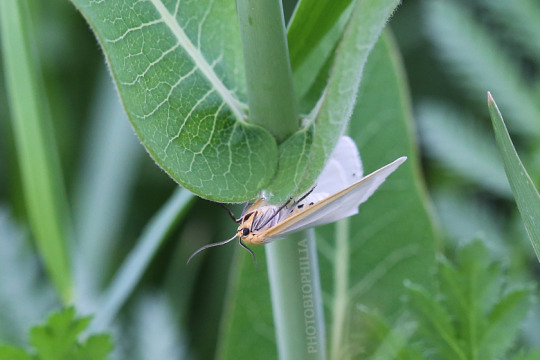


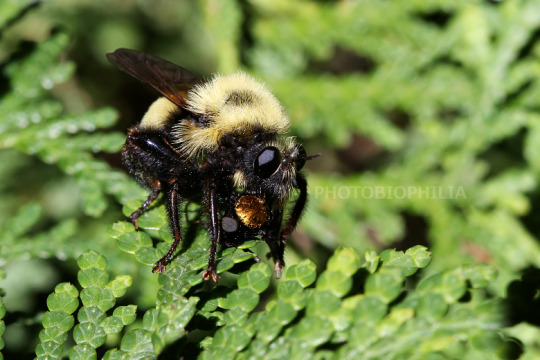
June 2022 Photo Dump:
Common ringlet (June 1, 2022; Toronto, Ontario)
European common blue (June 1, 2022; Toronto, Ontario)
Delicate Cycnia moth (June 1, 2022; Toronto, Ontario)
Northern mockingbird (June 1, 2022; Toronto, Ontario)
Wild lupine (Lupinus perennis; June 16, 2022; Toronto, Ontario)
Bumblebee-mimic robber fly (Laphria thoracica; June 18, 2022; Toronto, Ontario)
#ontario nature#nature#insect photography#insect macro#northern mockingbird#canon#photographers on tumblr
2 notes
·
View notes
Text
Purchase cotton moisture meter with power function at supplier shop Uganda
Portable Moisture Meter Gmm mini Portable Moisture Meter WDN-108 Out Of Stock Draminski manufacture their new
Why is it good to have a grain moisture meter?
you will know what the quality of your grain is
you will be sure that the moisture of the grain you leave at the collection point is exactly as it should be
you will save time and money as far as deductions at the grain collection point are concerned
you will store even large parts of grain safely for a long period of time
you reduce the risk of moulds occurring in any part of grain
you prevent the grain from heating in silos
you increase profitability of your crops
GMM Grain Moisture meter is characterised by:
·
accurate and fast measurement
large number of calibrations (30 species)
user-friendliness
modern design
ergonomic shape
The meter is calibrated for 30 species of cereal, oilseed, legume and grass seeds with the following measurement ranges:
rye 7.6% – 35.0%
wheat 7.2% – 35.0%
quality wheat 7.3% – 35.0%
triticale 7.4% – 35.0%
spring barley 8.0% – 35.0%
oat 8.0% – 35.0%
buckwheat 6.5% – 35.0%
horse bean 7.9% – 35.0%
yellow lupine 6.6% – 35.0%
narrow-leafed lupin 7.5% – 35.0%
pea 8.0% – 33.0%
field peas7.8% – 35.0%
canola 4.0% – 30.0%
bean 7.7% – 30.0%
corn 8.0% – 43.0%
shelled sunflower seeds 6.0% – 14.9%
husk sunflower seeds 5.5% – 15.6%
perennial ryegrass 6.4% – 22.0%
red clover 5.7% – 26.3%
white clover 4.8%-25.0%
small kidney beans 8.9% – 30.4%
jack bean 8.9% – 30.0%
mustard 7.3% – 21.6%
panicum 4.0% – 18.6%
soya beans 7.5% – 28.8%
sorghum 9.8% – 28.3%
linseed 5.4% – 20.5%
white rice 7.4%-18.2%
wild rice 9.1%-21.4%
coffee beans 7.7%-30.0%
We can add new calibrations upon customer’s request:
millet cereals 3.2% – 21.5%
cocksfoot 3.8% – 24.3%
cornmeal 8.0% – 25.0%
pearl barley – fine 8.0% – 20.0%
pearl barley – medium 8.0% – 20.0%
pearl barley – thick 9.0% – 21.4%
farina 6.5% – 18.0%
wheat germ 9.9% – 21.0%
monogerm beet root seed 7.7% – 23.3%
monogerm sugar beet 9.0% – 26.2%
meadow fescue 5.0% – 24.3%
milk thistle 8.0% – 35.0%
cherry stones 7.4% – 31.2%
black gram 5.0% – 35.0%
mung bean 5.0% – 35.0%
jute seed 5.0% – 35.0%
onion seed 5.0% – 35.0%
tall fescue 5.5% – 24.5%
shelled pumpkin seeds 5.8% – 25.0%
zucchini 5.3% – 14.7%
beetroot 7.1% – 19.0%
cucumber 3.7% – 12.4%
broad bean 7.1% – 19.0%
naked oat 9.0% – 20.0%
Buckwheat kasha not roasted 10% – 20%
There is a possibility of extending the list of species. Please contact us, if you’re interested.
Portable Moisture Meter for Seeds Bd
How grain moisture is being measured?
DRAMIŃSKI Grain Moisture Tester uses the capacitance measurement method. A reference method used for developing calibration curves, that are permanently stored in the device memory, is a laboratory oven-drying method used in accordance with applicable standards.
What is shortened modification used for?
Dramiński Grain Moisture Tester gives possibility of modifying calibration curves. Tester users can calibrate the device on their own, i.e. modify preset moisture curves for each species, which curves have been created based on comparative studies with the use of an oven-drying method.
Calibration consists in modifying (correcting) tester readings by increasing or decreasing the value of readings for a given species by the same amount within the entire measurement range. Modification is made, if the user finds that for a given species a device tends to overestimate or underestimate the results by a similar value within the entire moisture range.
The set includes:
DRAMIŃSKI GMM moisture meter,
special dispenser with a bolt,
1 x 9V 6LF-22 type alkaline battery,
reusable transport packaging (made of plastic),
manual.
Technical data
Dimensions
25.0 x 16.0 x 11.5 cm
Unit weight
940 g (with battery)
Sample loading
manual, using dosage tube with slider
Sample volume
270 ml
Moisture measurement method
capacitive
Power supply
1 x 9 V battery, type 6LF-22
Power input
about 12 mA
Estimated working time on one battery pack
about 45 h
Battery low indication
Automatic
Display
LCD, alphanumeric 2 x 16 digits
Keyboard
membrane
Measurement resolution
temperature – 1°C, moisture – 0,1%
Data modification
using keyboard – Data modification option
Range of temperature measurement
from 0 °C to about 70 °C
Temperature compensation
Automatic
Accuracy of temperature measurement
±1 °C
Accuracy of moisture content measurement
± 1 % in the range up to 10 % of moisture ± 1,5 % in the range above 10 % of moisture and can increase with moisture level
Recommended working temperature
from 10°C to 35°C
Recommended storage temperature
from 5°C to 45°C
Thank you for allowing Accurate Weighing Scales (U) Ltd the privilege to serve you in advance.
For inquiries on deliveries contact us
Office +256 705 577 823, +256 775 259 917
Address: Wandegeya KCCA Market South Wing, 2nd Floor Room SSF 036
Email: [email protected]
https://barcodescalesuganda.wordpress.com/clients/
https://weighingscalesineastafrica.wordpress.com/about-us/
https://weighingscalesineastafrica.wordpress.com/clients-served/

0 notes
Text
Random February Planty Things
We're starting to creep into garden planning season since I know that March is going to fly by so I ought to start early. I'm not sure where we are going to be this summer with the garden - we were starting to get into wild witch garden territory last year in spite of the drought.
If we're being honest, the drought encouraged the witch garden vibes as only my hearty native plants survived the spring deluge and then were capable of thriving in the exact opposite for the next four months. My Hoary Vervain (Verbena stricta) had an amazingly successful year and has taken the lead in the attempt to take over the entire garden.

Both my Wild Lupine (Lupinus perrenis) and False Indigo (Baptisia australis) bloomed for the first time which was fantastic.
I think that I'm going to need some undercover for the front half of the garden (the back half is covered in clover and Creeping Charlie) so I bought some pink polka dot plant (Hypoestes phyllostachya) since it's all over the place for Valentine's day. My plan is to try to grow this as a fake perennial by taking cuttings of it every year to grow inside and plant it again in the spring. I recognize that it'll never survive a deep drought like we had last summer, but the plant is cheap enough to replace every year.
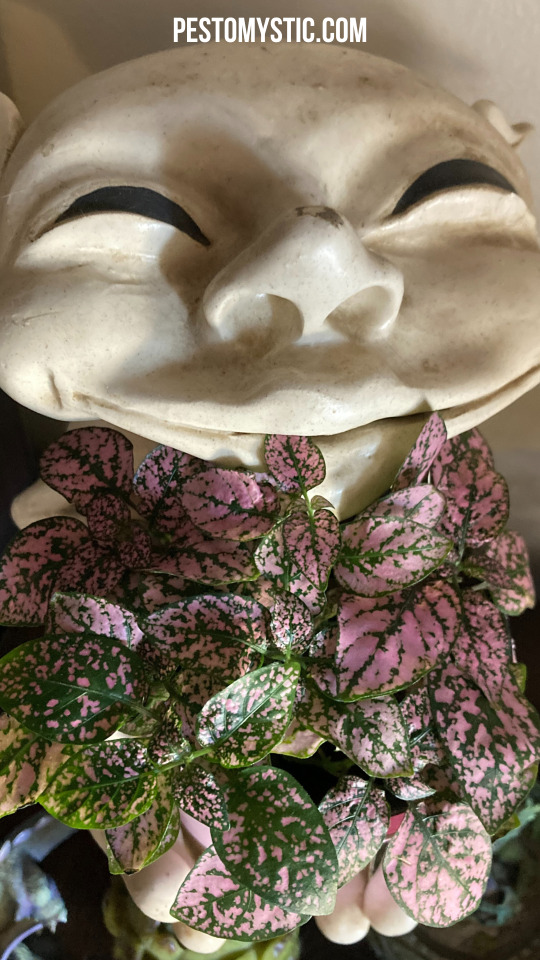
(And the pink color will look so good against the purples and yellows of my garden)
Plus, it will never survive our winters. That's a huge factor for me. Eventually, these gorgeous tall native perennials will have taken back this space and rewilded it (good luck to any future tenant who tries to pull these out - they've got tap roots for days) but until then, I will stand as a guardian of this space.
8 notes
·
View notes
Text
Kamil's story
The funicular ride I took uphill brought me to the place known as [Kali’s] Garden of [Eden], where wild roses grow and every single bush bears sixty blooms, with the sweetest scent of any flowers anywhere [1]. On my way up, the hustle and bustle of the city below grew fainter and the sumptuous greenery of the surrounding hillsides came into view.
In front of my eyes was a garden, and what a garden [2]! Beautiful pictures [of] herbaceous lupins, pink, yellow, mauve, and other colours, [...]; myosotis [...], giving spring carpets of their precious blue in bulb and other beds; giant pansies, white, primrose, mauve, purple, and other shades; [...] perennial poppies of the orientale and bracteatum types, having giant flower stems [...]; double and single giant pyrethrums, having [...] masses of beautiful flowers; scarlet, white, pink, purple and rose Brompton stocks [3]. The air heavy with the delicate scent of pink blooms of hibiscus and orchids, springs of joy murmur on every side [4]. Butterflies fluttering daintily from bloom to bloom, their wings a riot of vibrant hues. Soft, velvety moss growing luxuriantly around majestic trees with sprawling canopies. The garden’s flowers breathed perfume and its birds warbled amid the bloom as it were a garden of the gardens of Paradise [2]. This garden [did] not whet your appetite; it quenche[d] it [5].
As I lingered, marvelling at the kaleidoscope of colours that surrounded me, I could discern a soft melody in the distance. And behold, up came dancers and drummers with their drums and pipers with their pipes, [...] and played all manner antics with voice and limbs [6]. The placid serenity from moments prior had suddenly bloomed into a symphony above [the branches], a beating of drums below [the moss], dances, joyous faces [...], songs, [...] and frank laughter [7]. All gathered by a field which stretched to the brink of a brusque cliff. As the crowd stood motionless, the stillness broken only to the gentle flutter of dragonfly wings, moments stretched into minutes. Finally, a delicate silhouette ascended the stairs leading up the cliff face.
‘Who is she?’, I asked my neighbour.
‘Newcomer I see’ he said, ‘You have been in Eden, the garden of [the] God[s][8], Kali and Apollo. You have joined to meet the oracle, Ewa. Now observe and talk not’.
It all made sense. Hence [faces] splendid with both [smile] and [laughter]; [...] hence the zither and lyre and drums [9]. Hence the dances and cheering.
The oracle’s eyes, dark and deep as a starless night, observed the masses with a calm intensity that belied the seriousness of her task. As her body swayed slightly, behind her, her long robes flowed in the wind. And then, a powerful voice bloomed from her lips:
‘[Kali and Apollo are] wise [11], so pray to the Winds [10]’ she spoke, ‘They will prove to be mighty allies of [Krakow] [10]. [Jack] is wiser [11], so, love of money and nothing else will ruin [Krakow] [12]. But of all men [you are] wisest [11], so make your own nature, not the advise of others, your guide in life [13]. Also the dragon, earthborn, in craftiness coming behind thee [14]. Your presence here outrages the God[s] [15] who offended you. Don’t go back, matricide [15]! The names Shiva, Argus and Pinterest mark the hour of your downfall [15]!’.
Ewa’s words rang out across the garden, her voice carrying the weight of the prophecy. The crowd listened in rapt attention, knowing that her words carried the authority of the divine.
She turned around and vanished down the face of the cliff. My neighbour, much like everyone else around me, seemed to have heared the true answer to [their] question [16], a question that only those of Krakow appeared to have pondered.
As I retraced my steps towards the city, I knew I had visited the Garden of Eden upon the earth, birth place of the fairies: I will never forget thy beauties, O [Krakow], for none but thee will I ever long:— Blessed be the wonders that glitter on thy [meadows] [6].
[1] Herodotus, The Histories
[2] The Book of the Thousand and One Nights
[3] Gothein, A History of Garden Art
[4] Wollstonecraft, Complete Works
[5] Seneca, Complete Works
[6] The Book of the Thousand and One Nights Supplementary Nights
[7] Hugo, Les Misérables
[8] Augustine, The City of God
[9] Melanchthon Bucer, Collected Works
[10] Macaulay, G. C., Herodotus Book VII
[11] Nietzsche, The Birth of Tragedy and Other Writings
[12] Diodorus VII.12.5
[13] Ciero
[14] Plutarch, On the Pythian Responses
[15] Markville History, World History to 16th Century
[16] Aquinas, Summa Theologica
1 note
·
View note
Text

Wild Lupine
Lupinus perennis
Pleasant Valley Conservancy, WI
29 May 2021
#wild lupine#lupinus perennis#wildflower#original photographers#photographers on tumblr#imiging#nature photography
50 notes
·
View notes
Text



Wild lupine (Lupinus perennis).
#biscuit photos#photography#photoblr#lupine#photos#photographers on tumblr#plants#plant photography#flower photography#flowers#nature photography#purple#digital photography#nature#wild lupine#lupinus perennis#green#greencore#purplecore#plantcore#naturecore#environment#wildflowers#flowercore#cottagecore
10 notes
·
View notes